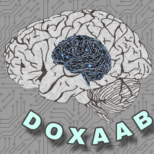alcohol use disorders (AUDs) which affect 20-30% of middle-class men and 15% of women seeking medical care.
Individuals with AUDs are typically high-functioning, holding jobs and living with family, yet they face a significantly higher risk of premature death, anxiety, depression, and serious medical issues. AUDs cost the U.S. nearly $225 billion annually
Alcohol has a profound impact on neurochemical systems, leading to both acute and chronic psychological symptoms. Preexisting psychiatric disorders, such as antisocial personality, bipolar, and schizophrenia, increase the risk of developing AUDs.
DSM-5 and ICD-11. Both systems agree that AUDs are characterized by repeated impairments in various life areas due to alcohol use. In DSM-5, AUD is diagnosed when at least two of 11 criteria related to alcohol impairments are present over a 12-month period.
Several approaches have been tested as potential alternative AUD criteria and as efforts to divide AUDs into clinically meaningful subgroups.
For example, a more severe early onset of an AUD, accompanied by criminality and problems with other drugs, has been labeled as type 2 or
type B alcoholism.
HISTORY
Alcohol (ethanol) has been consumed by humans for at least 12,000 years, originally used for ceremonial, nutritional, and medicinal purposes in ancient civilizations like Babylon, Greece, and Rome. Early consumption mainly involved beer and wine, with distilled spirits like whiskey emerging around 1400 AD. By the 1600s, alcohol consumption was encouraged in England as a tax revenue source.

DOXAAB.COM
Prevalence of Drinking
The peak age of onset for AUDs is between the early 20s and 40s. Early-onset AUDs are often more severe, linked to conduct disorder and antisocial behaviors, while later-onset AUDs tend to be less severe but associated with medical issues. Despite challenges, many people with AUDs maintain jobs and families.
Up to 80% of individuals with alcohol use disorders (AUDs) experience temporary symptoms of sadness or anxiety. These symptoms can become intense enough to meet the criteria for major psychiatric conditions, such as major depressive episodes or panic disorder, in about 40% of cases. It’s important for clinicians to distinguish between temporary alcohol-induced psychiatric symptoms, which typically resolve within a week to a month of abstinence, and independent psychiatric disorders, which may require long-term treatment. Alcohol-induced mood or anxiety disorders often improve with cognitive-behavioral therapy (CBT) and do not require the same long-term pharmacological treatments as independent mood or anxiety disorders.
PHARMACOLOGY AND ALCOHOL’S EFFECTS
Ethanol, or beverage alcohol, is quickly absorbed through the digestive tract, particularly in the small intestine, and is distributed throughout the body due to its high water solubility. Alcoholic beverages like wine, beer, and spirits differ in additional components, called congeners, that contribute to their taste.A standard drink in the U.S. contains 10-12 grams of ethanol, which raises the blood alcohol level by about 15 to 20 mg/dL in an average person.
Alcohol is metabolized primarily in the liver by alcohol dehydrogenase (ADH), which converts it into acetaldehyde. Acetaldehyde is then further broken down by aldehyde dehydrogenase (ALDH). Variations in ADH and ALDH genes, especially among Asian populations, can influence alcohol metabolism and lower the risk of alcohol use disorders. Between 2 to 10 percent of alcohol is excreted unchanged through the lungs, kidneys, or sweat. Alcohol’s absorption and metabolism are faster on an empty stomach or when consumed with carbonated beverages.
Alcohol as a Depressant Drug
Alcohol is classified as a depressant drug, producing sedating effects such as somnolence and decreased neuronal activity. It shares these properties with other depressants like benzodiazepines and barbiturates, and can be potentially lethal in overdose, especially when combined with other depressants. Alcohol induces physical dependence and withdrawal syndromes similar to other depressants.
Neurochemical Effects of Ethanol
Neurochemically, alcohol affects multiple systems in the brain. It enhances the GABA-A receptor, contributing to its sedative and muscle-relaxing effects, while inhibiting glutamate (NMDA receptors), which leads to dampened stimulation during intoxication and heightened effects during withdrawal. Chronic alcohol use alters dopamine and serotonin systems, influencing pleasure, craving, and intoxication. Alcohol also interacts with opioid, adenosine, acetylcholine, and CB1 receptors.
Tolerance
With repeated use, tolerance to alcohol develops, requiring larger doses to achieve the same effects. Tolerance can be behavioral (learning to function while intoxicated), pharmacokinetic (metabolism adaptation), and pharmacodynamic (nervous system resistance to alcohol’s effects). Cross-tolerance can occur with other depressants, meaning tolerance to alcohol can extend to substances like benzodiazepines. Taking multiple depressants together can amplify their effects, potentially leading to a fatal outcome
Blackout
A blackout is a form of memory impairment (anterograde amnesia) that occurs after heavy drinking, where a person remains awake but cannot remember events during the drinking period. It happens because alcohol (and other depressants) disrupts memory formation. Approximately 50% of drinkers experience a blackout at some point, and repeated blackouts can be an indicator of an alcohol use disorder (AUD).
Sleep Impairment
Sleep impairment is another effect of alcohol. While alcohol can initially help a person fall asleep, it disrupts the sleep cycle after consuming two or more drinks. It suppresses REM sleep, inhibits stage 4 sleep, and causes sleep fragmentation, leading to more frequent awakenings and disturbing dreams. For heavy drinkers and those with AUDs, sleep patterns may not return to normal until several months of abstinence. Persistent sleep problems after abstinence increase the risk of relapse.
